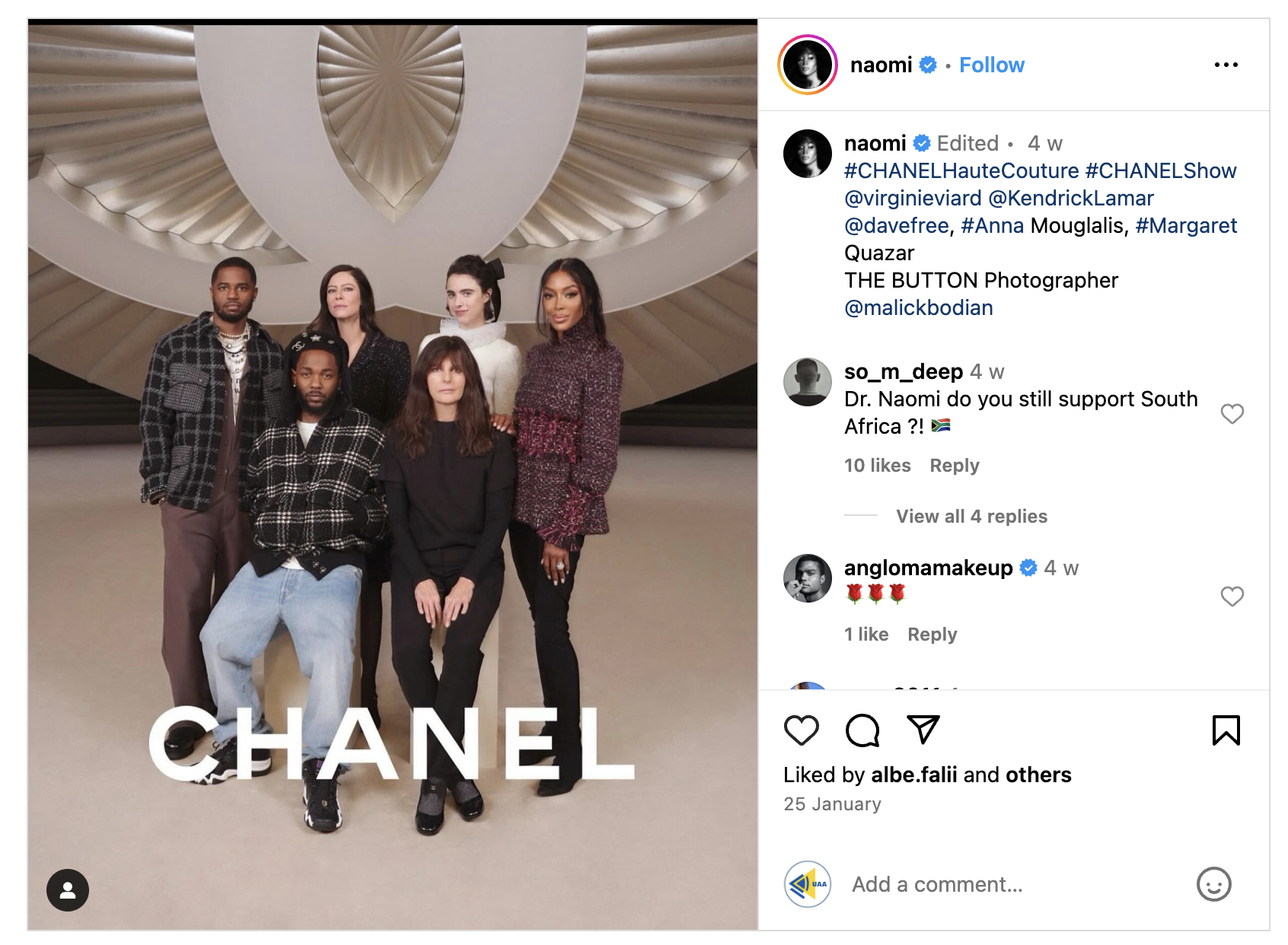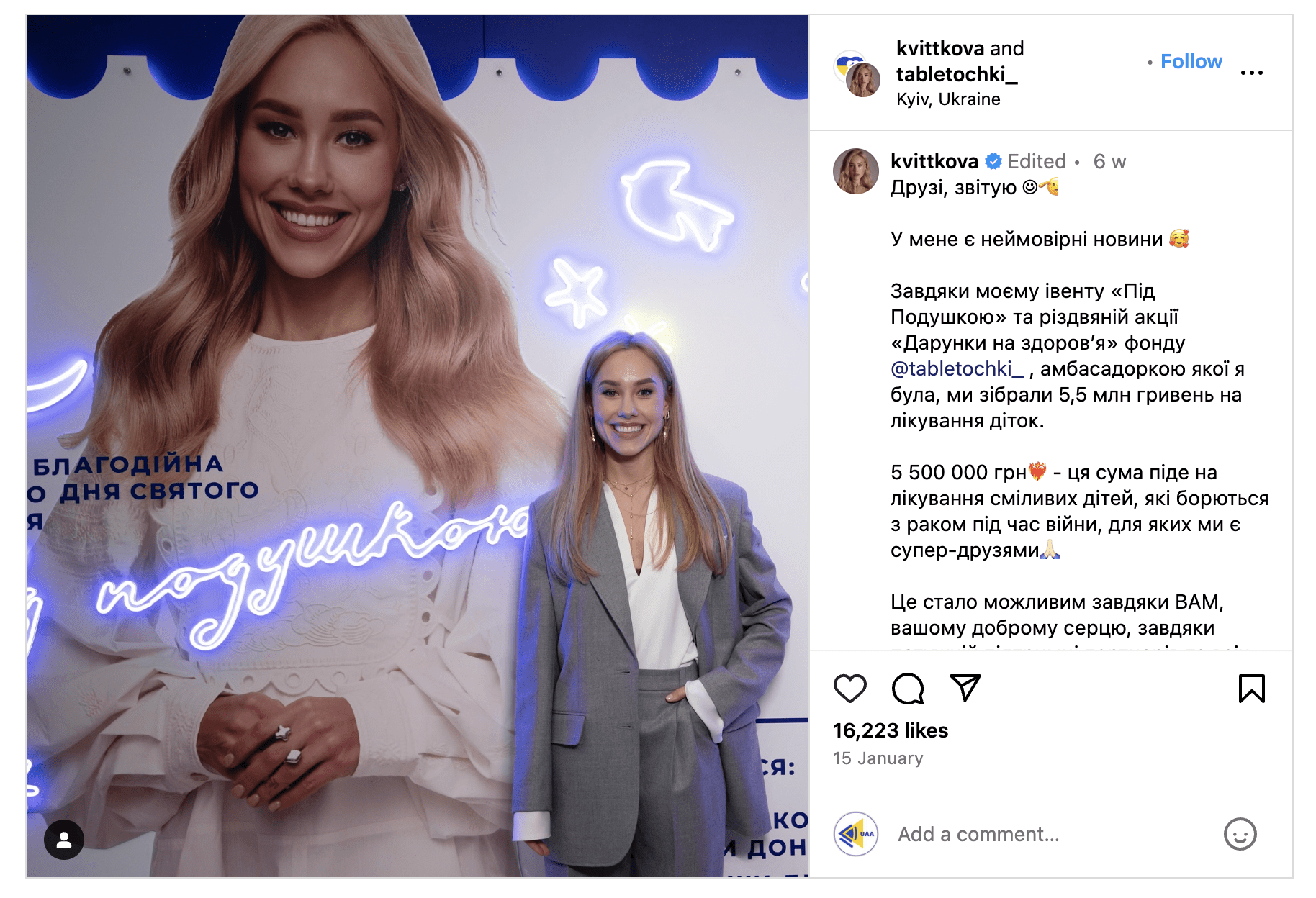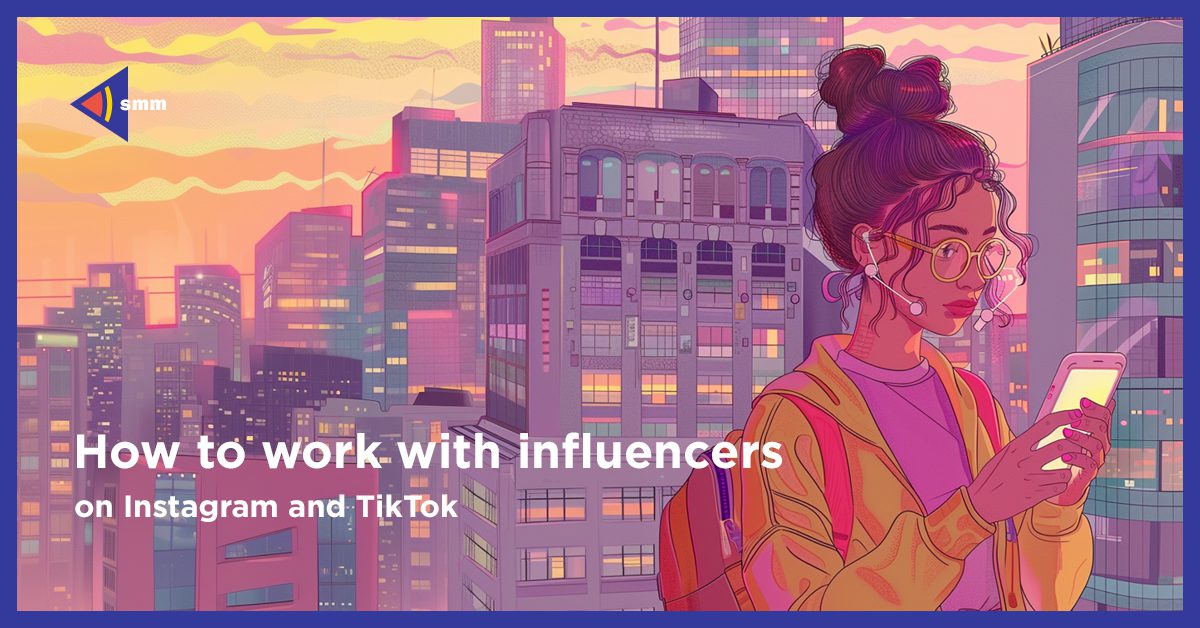How to Work with Influencers on Instagram and TikTok
Collaborating with Instagram and TikTok influencers to enhance brand awareness and boost its popularity.
Every business aims to expand its reach and attract more customers. One of the most effective methods of brand promotion is influencer marketing – collaborating with thought leaders on social media platforms. However, not all business owners understand how and where to find, and most importantly, who to consider an influencer. Below, we’ll provide answers to these and other questions.
Who is Considered a Thought Leader on TikTok and Instagram?
An influencer is someone who holds authority and influences an audience through their experience, knowledge, and more. For businesses, a thought leader, trusted and loyal to their followers, serves as an effective communication channel with social media users, such as those on Instagram and TikTok. Audiences are interested in what influencers wear, use, and where they go. From this perspective, brands have a unique opportunity to become part of an influencer’s life, who promotes favorite products or shares valuable recommendations.
Logically, the broader an influencer’s audience, the wider the reach a brand can anticipate when initiating a collaboration. Hence, it’s crucial to find the right thought leader who can effectively convey the essence of your service or product, encouraging followers to click on the link and hit the “Buy” button.
Categories of Influencers
Before proposing collaboration to a thought leader, it’s worth exploring their page. Influencers are divided by the number of subscribers into:
- Micro-influencers with an audience of 10-50 thousand users;
- Macro-influencers with 50 thousand to 1 million subscribers;
- Mega-influencers (millionaires), whose follower count exceeds 1 million.
Micro-influencers may work on a barter basis, meaning without payment, and fully dedicate themselves to the task at hand. They don’t have exorbitant rates or a large number of daily advertising integrations. However, to achieve a high level, one must establish themselves.
Macro-influencers already have certain pricing structures for their services and a denser advertising schedule on their blog.
As for millionaires, the primary factor is the recognizability of the individual. A subscriber is more likely to purchase a cosmetic product recommended by a reputable blogger than one about which nothing is known.
An ideal option is to collaborate with several different influencers – this will provide brand recognition and sales growth as a result.
Features of Collaboration with Influencers
Company collaboration with a blogger has several differences from other types of partnerships:
Authenticity – the content published should cater to the audience’s benefit and stay within the blog’s overall style; Targeting – by selecting the right thought leader, you can tailor communication channels to the most interested audience in the product; Feedback – after advertising integration on the influencer’s blog, you can see the audience’s reaction and feedback; Live traffic – the blogger’s page can act as a springboard to attract leads to business owners’  pages, company websites, etc.
pages, company websites, etc.
All of this has its advantages, enabling the brand to achieve its goals while the thought leader receives another successful case for their collaboration history.
Benefits of Brand Collaboration with Thought Leaders
Since influencing an audience is achieved through influencers providing personal recommendations, the following advantages of such collaboration stand out:
- Media, informational, and educational nature of influencer marketing without a direct sales pitch, which avoids alienating subscribers, unlike traditional advertising methods.
- Gradual introduction of the audience to a new product, done organically and in a friendly atmosphere.
- Demonstrating product capabilities while highlighting the benefits of purchase without a pushy tone.
- Addressing objections and refining product nuances if necessary.
- Building trust in the brand and the company, as well as supporting its positive image.
- Increasing sales as one of the primary goals of any collaboration and advertising campaign.
Considering these benefits, it’s worth choosing the type of information presentation from the blogger that will provide the best effect for the company.
Formats of Collaboration with Influencers
Among the types of collaboration with thought leaders, the following can be highlighted:
- Product demonstration in posts, reviews in Stories, or Reels. The influencer, through text or video, talks about your product and shares their own experiences with its use.
- Product placement. This is native advertising, where the product is mentioned in a post or appears in the blogger’s frame without specific emphasis on its properties and quality.
- Unboxing. The blogger records a video of unpacking press kits from brands and talks about each product.
- Giveaways. The influencer launches a time-limited contest where your product is the prize.
- Ambassadorship and collaboration. This entails the presentation of an advertising campaign permanently, which is paid for the long term.
- Partner publications (only available for Instagram). Joint publication of a post by the brand and the influencer, resulting in it appearing on both profiles.
One example of ambassadorship and partner publication is a post by Daria Kvitkova and the Tabletochki Foundation, which is reflected on both profiles:

While a blogger may independently decide in which format to present information, more often than not, the brand immediately determines the most effective format for itself.
Criteria for Finding Thought Leaders
Before starting the search for an influencer, several important criteria need to be defined:
The goal of advertising integration
Enhancing reputation or supporting brand image is more effectively achieved through celebrity involvement. Instant recognition, rapid sales growth, and broad reach can be obtained through collaboration with macro-influencers. Micro-bloggers, on the other hand, can help strengthen positioning since they have a small audience that pays maximum attention to content, eagerly shares it, and discusses it.
The scale of the advertising campaign
Are you interested in a one-time collaboration or several consecutive partnerships? This determines the next point – the budget you are willing to allocate for integration. It’s logical to note that the larger an influencer’s audience, the more expensive their collaboration rates will be.
Portrait of your customer
Describe who your user is and how much money they are willing to spend on your product. Even if the brand aims to achieve results through word of mouth, influencers with a million-strong audience should be chosen based on niche relevance rather than subscriber count. For example, on Naomi Campbell’s Instagram profile with 16 million followers, you won’t see posts tagged with mass-market brands like Zara or H&M, but you’ll find mentions of luxury brands like Chanel, Dolce&Gabbana, and Karl Lagerfeld.

Services for Finding and Verifying Thought Leaders
We present to you the top five platforms where businesses seek bloggers for advertising integrations.
22ND FLOOR
A Ukrainian resource for collaboration between bloggers and companies on social media platforms such as Instagram, TikTok, and YouTube. The service offers:
Convenient sorting of bloggers based on various parameters. Comparative statistics and influencer analysis. Communication with thought leaders and further contract arrangements through the platform. Monitoring of the advertising integration process and collection of analytical data for performance evaluation. A blacklist of bloggers to avoid collaborating with.
The platform has its pricing, which depends on the chosen number of subscription months and projects and is designed for a certain number of influencer inquiries.
trendHERO
The platform is designed to display analytical data on TikTok, Instagram, and YouTube bloggers. It is currently one of the most popular resources, offering the following key features:
More than 90 indicators for influencer verification. Over 20 filters for successful searches. Tracking of a blogger’s account statistics and analysis of their audience. Content research and its effectiveness analysis. Analysis of previous collaborations between influencers and brands. Report generation in Excel and PDF formats.
The paid version of the resource allows full utilization of all its features, with monthly service starting at $15.
Influencity
An online resource boasting the largest database with over 70 million influencers. The platform offers:
Creating a personal profile and adding information about oneself as a content creator and marketer. Convenient search for thought leaders using filters. Access to in-depth statistics of a blogger’s account. The ability to collaborate with international influencers.
The service offers both free and paid usage options. The starting price for the latter is $50 per month.
HypeAuditor
A platform with over 50 million blogger accounts available. Its main functionalities include:
Over 35 metrics for detailed analysis of the thought leader’s audience. Checking the influencer’s profile for fraud and brand compliance. Evaluation of key KPIs for advertising campaigns.
The tariffs for using the platform are calculated individually in each case. Access to a free demo version for a specific period can be booked by filling out a special form on the website.

